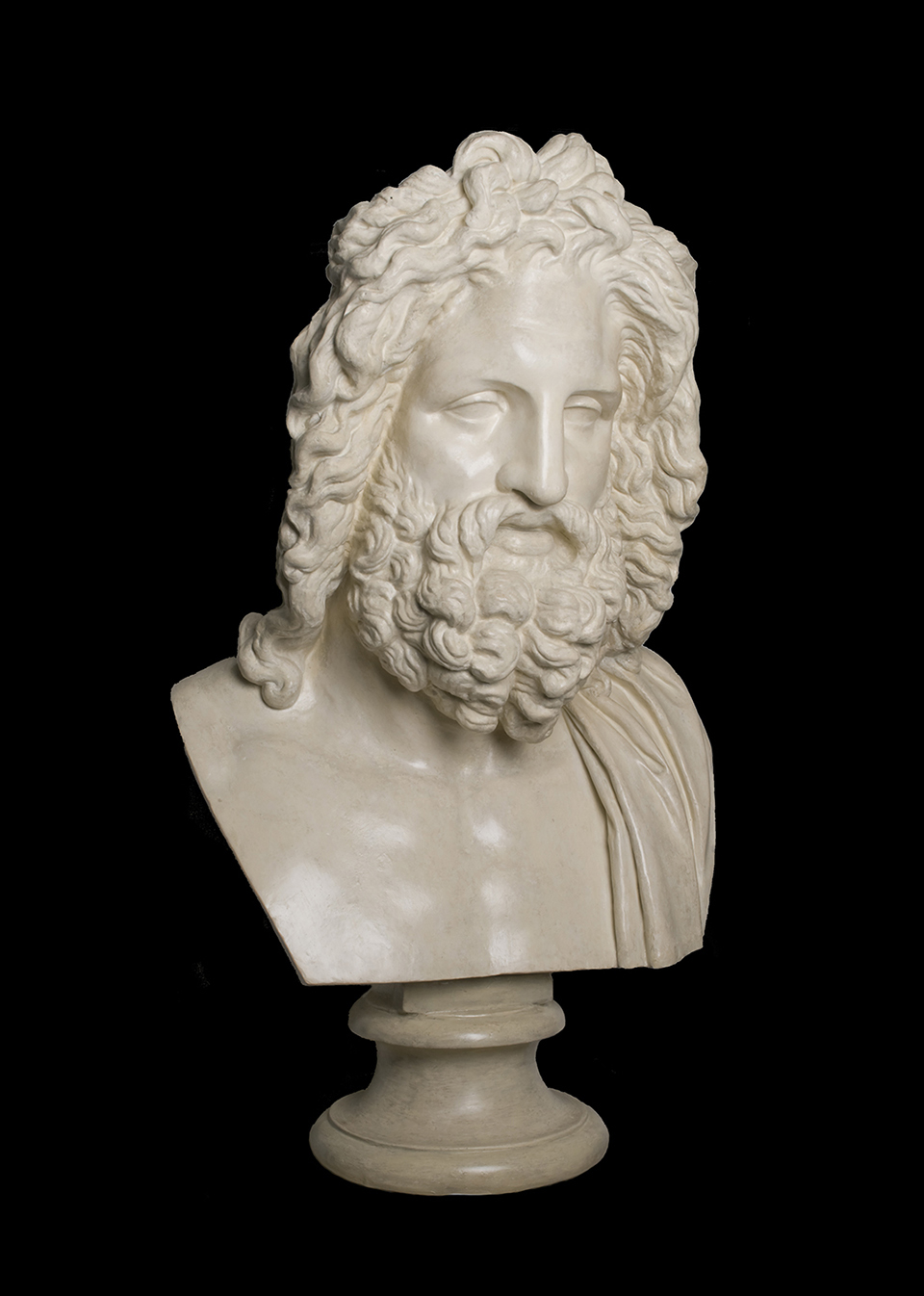
Displayed in the west end of the chamber known as the “Blue Entry” on the first floor of the Longfellow House is this massive bust of Jupiter. This 19th-century plaster copy of a Roman bust (itself a copy of an older Greek work) has been in the Longfellow House since 1846. That year Henry and Fanny Longfellow recorded the arrangement of furniture for their son Charley’s second birthday dinner, writing, “there were two supper tables, one in the dining room, + one in the hall adjoining under the colossal bust of Jupiter . . .” A year later, Fanny wrote in a letter to her brother-in-law Sam Longfellow, “We, at present, take our meals under Jupiter which we find charming these happy summer mornings.”
The Roman bust was discovered in the town of Otricoli, about 70 km north of Rome, during excavations in the 1770s undertaken at the behest of Pope Pius VI, who expanded the Vatican’s museum collections through such projects. A massive marble depiction of the chief Roman god Jupiter (Greek Zeus), the bust is still on display in the Museo Pio-Clementino, part of the Vatican Museums partially named for Pope Pius VI. The plaster copy at the Longfellow House is the same size as the original, measuring over 3’ high from base to the top of the bust.
The bust seems to have remained in this spot ever since 1846, receiving mention several times in publications and Longfellow family records. It is noted in 1887 in Poets' Homes: Pen and Pencil Sketches of American Poets and Their Homes by R.H. Stoddard, where a description of the hall reads, “From this room [dining room] we pass into a long narrow hall, running the length of the house. At its head great Jove looks before him with big, unseeing eyes . . .” The bust also appears in the hall in the 1912 and 1954 inventories of the house’s furnishings, as well as in early 20th-century photographs of the room. It still stands there today, surveying the rest of the hall.
